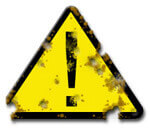How to handle neodymium magnets safely?
The strongest magnets in the world needs knowledge.
Safety is priority. Strong magnets, despite their inconspicuous appearance, possess enormous energy. Study the rules below to prevent accidents and property damage.
Safety checklist!

Do not underestimate power
Be careful. Neodymium magnets attract from a long distance and snap with huge force, often faster than you can react.
Serious injuries
Large magnets can crush fingers in a fraction of a second. Never put your hand between two strong magnets.
Fragile material
Neodymium magnets are sintered ceramics, meaning they are fragile like glass. Clashing of two magnets will cause them breaking into small pieces.
Choking Hazard
Adult use only. Tiny parts can be swallowed, causing severe trauma. Store away from kids and pets.
Implant safety
Individuals with a ICD should keep an absolute distance from magnets. The magnetism can stop the operation of the life-saving device.
Cards and drives
Powerful magnetic fields can erase data on payment cards, HDDs, and storage devices. Maintain a gap of min. 10 cm.
Compass and GPS
Be aware: rare earth magnets produce a field that disrupts precision electronics. Maintain a safe distance from your phone, device, and GPS.
Sensitization to coating
Certain individuals suffer from a hypersensitivity to Ni, which is the common plating for NdFeB magnets. Prolonged contact can result in dermatitis. We strongly advise wear protective gloves.
Thermal limits
Keep cool. NdFeB magnets are susceptible to temperature. If you require resistance above 80°C, look for HT versions (H, SH, UH).
Machining danger
Powder produced during cutting of magnets is combustible. Avoid drilling into magnets without proper cooling and knowledge.

